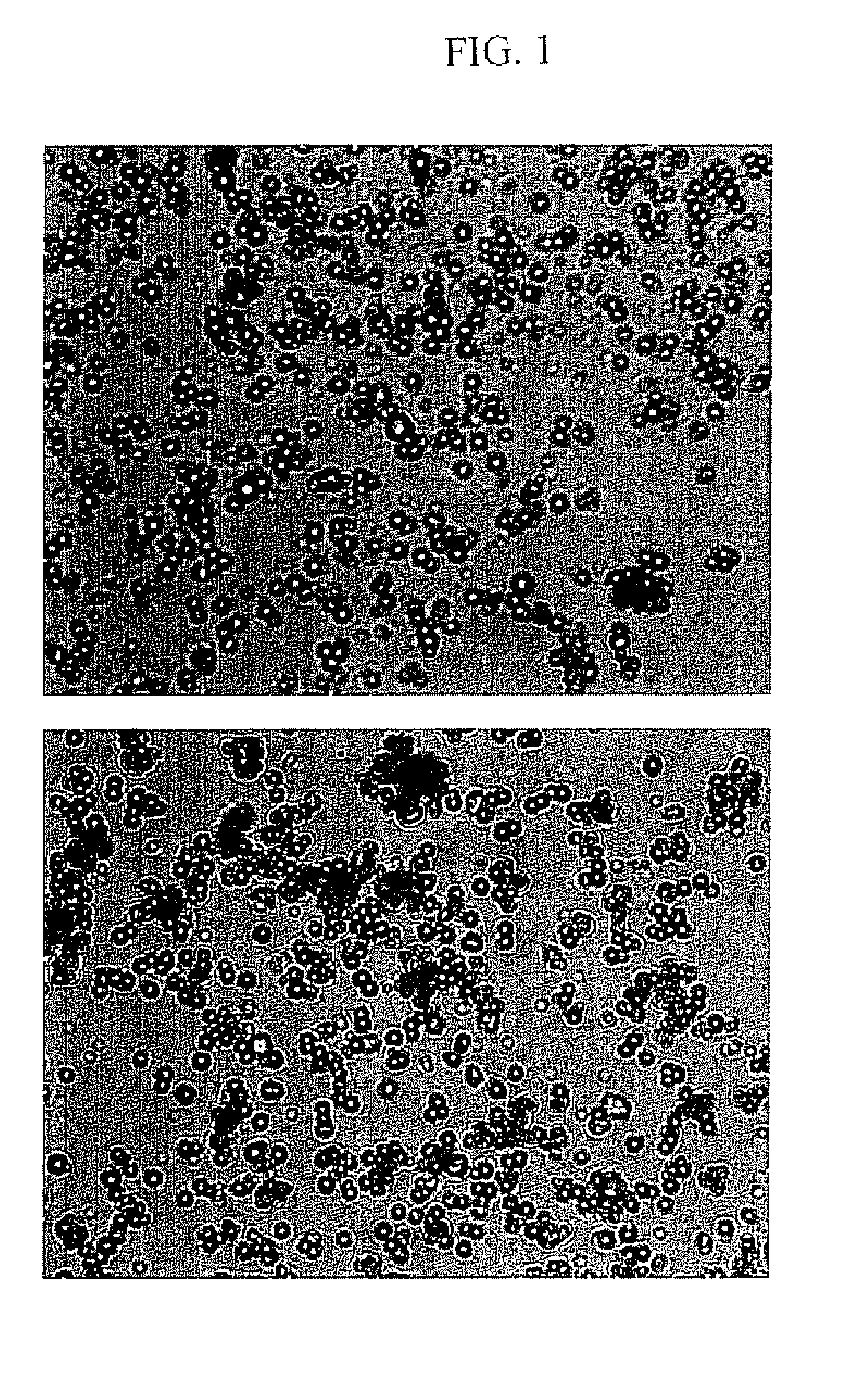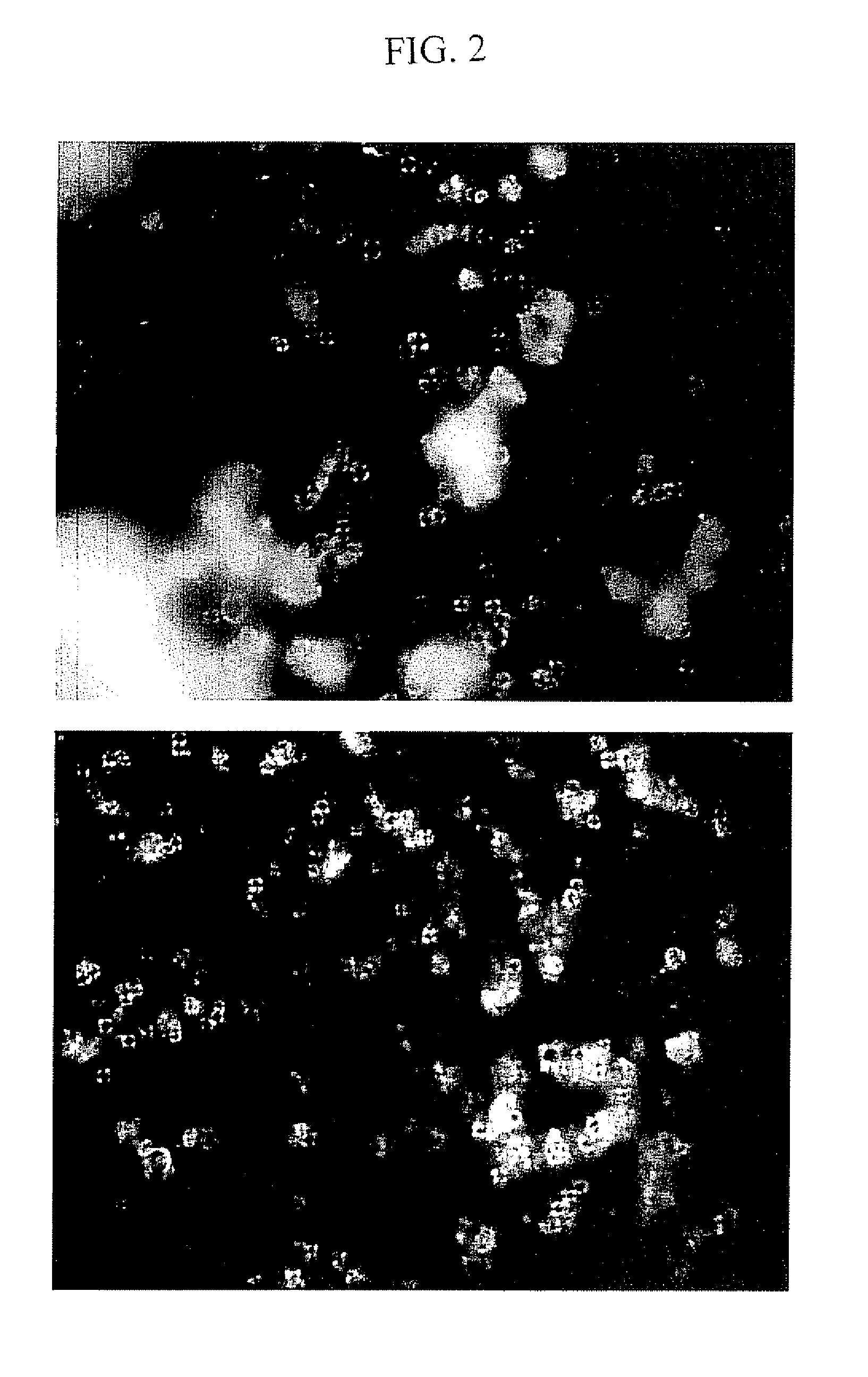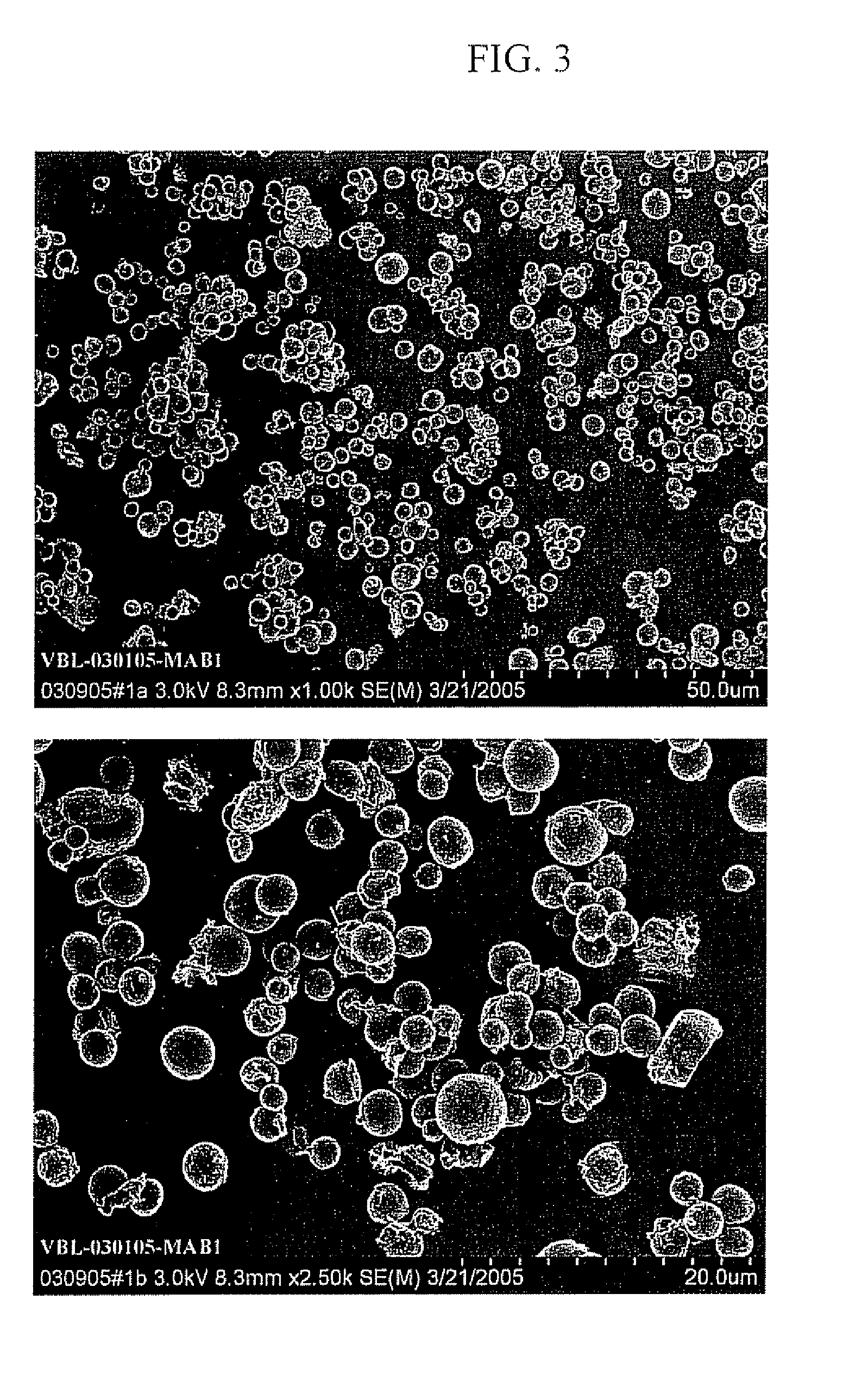Protein Microspheres Retaining Pharmacokinetic and Pharmacodynamic Properties
a technology of pharmacokinetic and pharmacodynamic properties, applied in the direction of peptide/protein ingredients, antibody medical ingredients, metabolism disorders, etc., can solve the problem of otherwise unfavorable macromolecules of these types, and achieve the effect of reducing the solubility of active agents
- Summary
- Abstract
- Description
- Claims
- Application Information
AI Technical Summary
Benefits of technology
Problems solved by technology
Method used
Image
Examples
example 1
[0113] This Example provides one procedure for preparation of 500 μl batches of syringeable anti-Factor VIII monoclonal antibody microspheres. Ten batches of 500 μl of the monoclonal antibody are prepared in Eppendorf tubes as follows:
[0114] Preparation of 40 mM Ammonium Acetate (AA) Buffer at pH6.5: 40 mM of AA buffer is prepared by dissolving 3.08 grams of AA (Spectrum) in 1 liter of deionized H2O. The AA is readily soluble and forms a buffer solution with a pH of ˜6.4, which is adjusted to pH6.5 with dilute ammonium hydroxides
[0115] Preparation of 500 mL of 10% Poloxamer 188 in 40 mM AA Buffet solution: 50 grains of Poloxamer 188 (BASE) are dissolved in 500 mL of 40 mM AA Buffer, as described in step 1, but pH adjustment is not necessary). The dissolution of this quantity of Poloxamer can be accomplished in several additions. The final pH is around pH ˜6.4. The solution is filtered with a 0.22 ml filter and kept refrigerated.
[0116] Buffer exchange: 2 PD10 desalting columns (Am...
example 2
[0122] This Example provides another procedure for preparation of 500 μl batches of anti-CD34 monoclonal antibody microspheres in Eppendorf tubes:
[0123] Preparation of 40 mM Ammonium Acetate Buffer at pH6.0: 40 mM of Ammonium Acetate (AA) buffer is prepared by dissolving 3.08 grains of AA (Spectrum) in 1 liter of deionized diH2O. The AA is readily soluble and forms a buffer solution with a pH˜ 6.4. Adjust the pH to pH6.0 with dilute acetic acid.
[0124] Preparation of 500 mL of 15% Poloxamer 188 in 40 mM AA Buffer solution: 75 grams of Poloxamer 188 (BASF) are dissolved in 500 mL of 40 mM AA Buffer (as described in step 1, but pH adjustment is not necessary). The dissolution of this quantity of Poloxamer can be carried out in several additions. The final pH is around pH˜6.4. The solution is filtered with a 0.22 μm filter and kept refrigerated.
[0125] Buffer exchange: 2 PD10 desalting columns (Amersham Biosciences) are used for 5 mL of the protein. Total column volume is 3.5 mL. Each...
example 3
[0131] The Example describes preparation of anti-Factor VIII monoclonal antibody microspheres with Poloxamer as solvent and microsphere formation under cooling. Anti-Factor VIII monoclonal antibody in 40 mM phosphate buffer at pH 7.0 and at a concentration of 5.3-5.5 mg / ml (no sodium chloride) was provided by Baxter Healthcare Corporation (Bioscience Division, Hayward, Calif.). Anti-Factor VIII is a murine monoclonal antibody with a molecular weight of approximately 150 kD, and is used for purification purposes. 5 mL of this monoclonal antibody at concentration of 5.3 mg / mL were filtered through a 0.22 μm filter and dialyzed against 40 mM ammonium acetate buffer pH 6.5 using dialysis cassette. Protein concentration was determined by measuring absorbance at optical density of 280 nm. A 10% solution of Poloxamer 188 NF (Lutrol F68) available from BASF Corporation (Florham Park, N.J.) was prepared at pH 6.0 and filtered with 0.22 micron filter. Ammonium acetate was provided by Spectrum...
PUM
| Property | Measurement | Unit |
|---|---|---|
| molecular weight | aaaaa | aaaaa |
| concentration | aaaaa | aaaaa |
| concentration | aaaaa | aaaaa |
Abstract
Description
Claims
Application Information
 Login to View More
Login to View More - R&D
- Intellectual Property
- Life Sciences
- Materials
- Tech Scout
- Unparalleled Data Quality
- Higher Quality Content
- 60% Fewer Hallucinations
Browse by: Latest US Patents, China's latest patents, Technical Efficacy Thesaurus, Application Domain, Technology Topic, Popular Technical Reports.
© 2025 PatSnap. All rights reserved.Legal|Privacy policy|Modern Slavery Act Transparency Statement|Sitemap|About US| Contact US: help@patsnap.com



